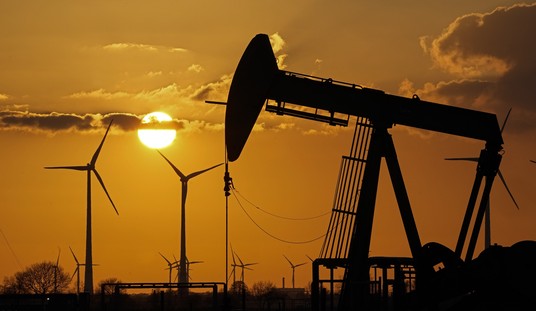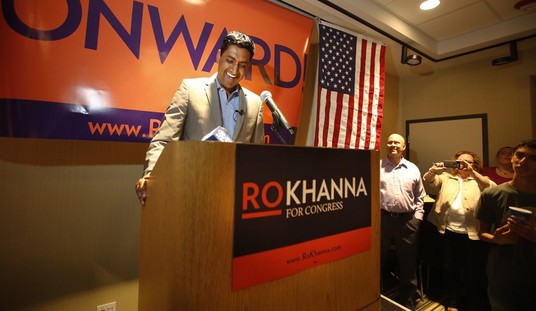We’ve hit the new alliances formed in the face of the aggressive Chinese expansion in the Pacific here at HotAir over the past couple of months – from Philippine rapprochement with the Japanese, the Japanese in a joint fight venture with Britain and Italy, ntm the strengthening of ties in “The Quad” or Quadrilateral Security Dialogue comprising Japan, the U.S., India, and Australia – to name a few.
One of our most enduring alliances has been with Australia. During World War II, besides their own troops and sailors valiantly facing Japanese forces sweeping through the Pacific, the Australians provided strategic support bases for American operations, both supply-wise and covertly. These were especially critical after the loss of the naval bases in the Philippines. One of the fascinating stories about Exmouth, in Western Australia (where our son Ebola lived for 14 months), is that during WWII, the natural harbor there became a clandestine submarine base, code-named “Operation Potshot.” The U.S. and Australians figured it was out of the range of the most capable Japanese bombers and could be set up to protect the shipping and patrol routes through the Timor Sea and the Indonesian/Indian Ocean side of the theater. It also provided much-needed maintenance and supply facilities, and they built a small adjoining expeditionary airfield as well as a naval comm center.
It lasted until the Japanese managed to attack it, and the cyclones proved to be especially vicious in that latitude when they blew through.
Fast forward 80 years or so, and it seems as if that shared submarine heritage is coming to the fore once again in the face of an Asian-Pacific neighbor’s expansionist moves.
Two years ago, the Australians came to the Biden administration with a request. As the U.S. had once helped Britain with nuclear technology, would it not now be willing to help the Aussies?
In April 2021, Australia’s top intelligence official went to Washington with an extraordinary proposal: the government in Canberra was looking to acquire nuclear-powered submarines.
The U.S. had provided nuclear submarine technology to Britain during the Cold War and had kept an iron grip on it ever since.
But Andrew Shearer, the director-general of Australia’s office of national intelligence, made the case in a meeting with Kurt Campbell, the White House coordinator for the Indo-Pacific, for sharing the tightly guarded capability.
The request, Mr. Shearer made clear, was coming from the prime minister himself, according to people familiar with the exchange.
Nearly two years later, President Biden and his Australian and British counterparts have settled on a plan to enable Australia to acquire, operate and eventually develop its own nuclear-powered subs.
The three-way alliance called Aukus—an acronym for Australia, the U.K. and the U.S.—has survived a change of government in Canberra, a new prime minister in London and congressional skeptics in Washington who fretted that providing submarine technology to Australia might come at the expense of the U.S. Navy.
After working through the details and in close concert with the British, the answer, as of yesterday, was “You got ’em.”
The U.S., Australia and United Kingdom announced Monday that Australia will acquire nuclear-powered submarines, making official a decadeslong plan that will require billions of dollars of new investment in the defense industrial base in all three countries.
…To speed up the effort, the U.S. will sell as many as five U.S. Virginia-class submarines to Australia to provide the country with nuclear-powered subs in the 2030s. While some of the subs could be made from scratch, others will be pulled from the fleet of subs in service with the U.S. Navy, officials have said.
Submarine production would later shift to Britain and Australia, which would produce a sub with a new design that would incorporate American technology. Those subs are projected to enter the Australian fleet in the 2040s.
…Overall, Australia would acquire at least eight nuclear-powered subs under an arrangement that is intended to preserve the lead the West has over China in undersea military systems and cement the alliance between Australia, the U.S. and Britain. The nuclear-powered subs for Australia would only carry conventional weapons.
Well done to Albo and Marles here. A very good result for Australia and a vital national capability is improved on with the shift to nuclear submarines. Project will have major ongoing domestic benefits in skilled jobs and STEM work. 🇦🇺🇬🇧🇺🇸….🏴☠️ https://t.co/TOPgReJ1su
— Gray Connolly (@GrayConnolly) March 13, 2023
The U.S. is going to work out the logistics by 2027 to cycle our subs through an Australian naval base so Aussie sailors get used to both the operation and technology involved. This is meant to bring their operational side of the house online quicker while awaiting delivery of their own boats and the necessary facilities construction. For their part, the U.K. is spending $6B to upgrade nuclear facilities, weapon stockpiles, and equipment, including a large chunk “enhancing support for its submarine fleet.”
…Biden outlined steps in the “Optimal Pathway,” beginning with Phase 1, which involves American and British submarines visiting ports in Australia and embedding those sailors into U.S. and U.K. forces and nuclear power schools. Both the U.S. and U.K. already use nuclear propulsion in their submarines, but Australia does not. Starting as early as 2027, the three countries will participate in a rotational submarine force aptly named Submarine Rotational Forces West.
Once enough Australians have been trained and the country has enough infrastructure to house many subs, then it’s on to Phase 2, where Canberra will buy three Virginia-class nuclear-powered submarines from the U.S. with the option to buy two more if needed. That’ll take place in the 2030s if both U.S. and Australian funding and infrastructure improvements for American shipyards come through.
This is terrific news for all involved.
Now the question will be, how do the Chinese react in the interim?








Join the conversation as a VIP Member